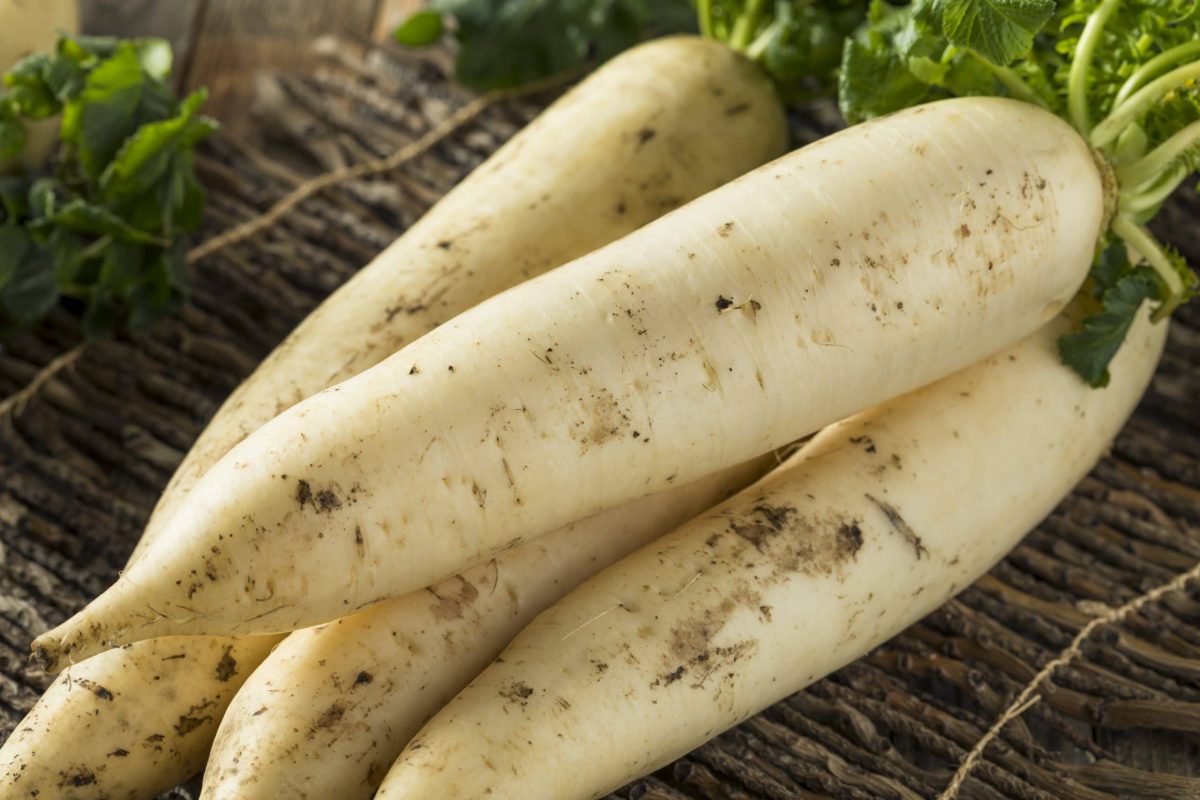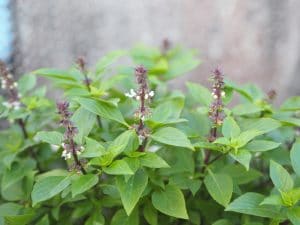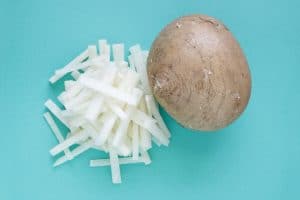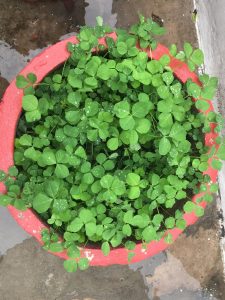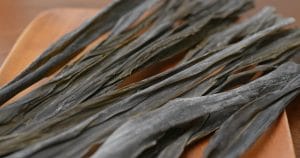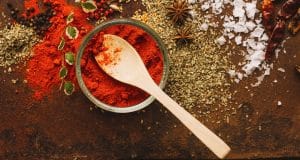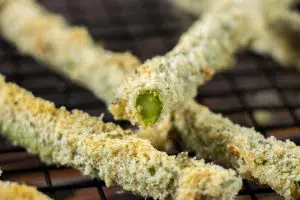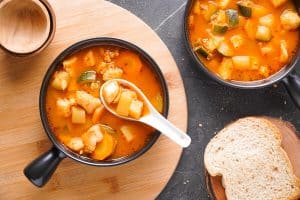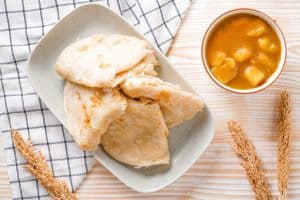Best Substitutes For Daikon
Important Note: When you buy through our links, we may earn a commission. As an Amazon Associate we earn from qualifying purchases. Content, pricing, offers and availability are subject to change at any time - more info.
Daikon radishes have become increasingly trendy due to Asian cuisine’s global appeal — coupled with Kimchi’s profound nutrients. Sadly, it is not always readily available, which is often the case with imported items. However, replicating Daikon’s one-of-a-kind sweet deliciousness and comforting crunch with a delectable substitute is not always an easy feat.
A substitute for Daikon includes any cruciferous vegetable that is sweet, mildly spicey, with a crunchy texture. Great substitutes included: spicy Korean radishes like Mu, mild-flavored white turnips and parsnips, sweet Jicama, crunchy carrots, fiery Horseradish, earthy beetroots, or cabbage hearts.
To find a Daikon substitute that will satiate your craving for a delicious Asian meal can be a daunting task (trust me)! I have discovered that it’s essential first to understand Daikon’s salient qualities to find a tried and tested alternative that will suit your palate and harmonize with other ingredients. So, read on — for foody perfection!
- What Is Daikon & How Should I Pick A Substitute?
- 9 Fantastic Daikon Substitutes For Delicious Dishes
- So, What Are The Best Substitutes For Daikon?
What Is Daikon & How Should I Pick A Substitute?
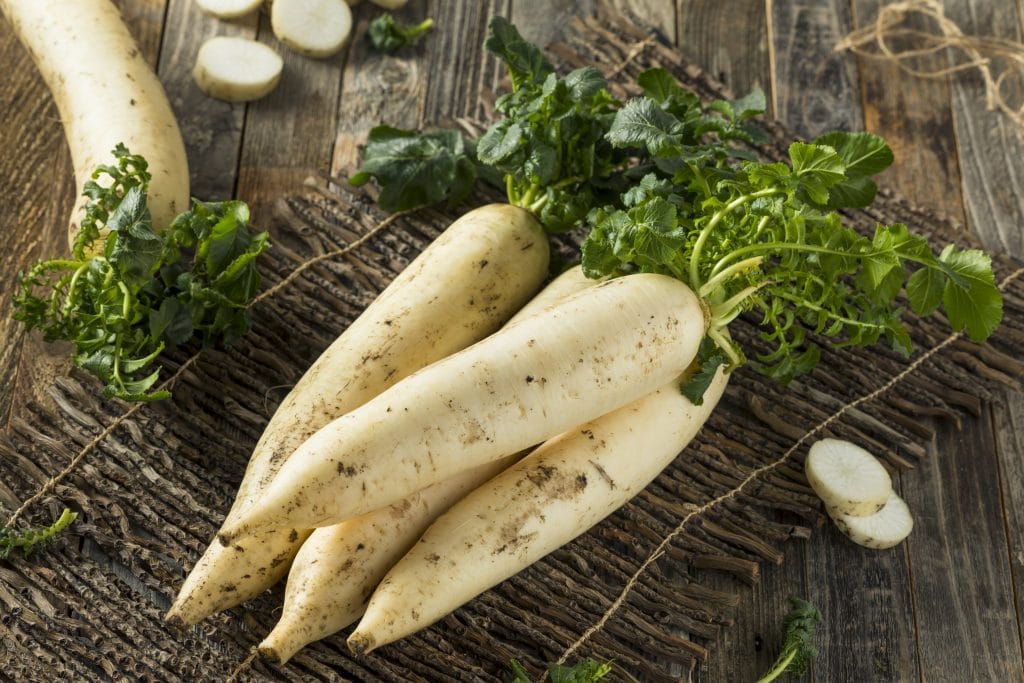
Daikon radishes have their unique flavor and texture characteristics. Therefore, choosing a substitute that will complement other ingredients and provide the bespoke taste you are hankering after is imperative.
What Is Daikon Exactly You Might Ask?
Daikon radishes are mildly spicy and sweet flavored crunchy root vegetables and part of the Brassicaceae plant family, which includes cruciferous veggies like mustards, cabbages, broccoli, and cauliflower. All aspects of Daikon radishes are edible, including their sprouts and skins.
They are commonly known as Japanese, Chinese (Cantonese Lobak), Korean mu, winter, watermelon, or white radishes that closely resemble white carrots of parsnips. However, their names vary depending on where they are cultivated.
It’s a nutritious, fat-free addition to several dishes which contain high levels of Vitamin C and can be pickled, thinly sliced for salads, or cooked tender ingredients for stir-fries, soups, stews, or savory baked dishes.
Choosing Perfect Daikon Substitutes: What You Should Know
While finding a perfect substitute for Daikon radishes is mostly dependent on your recipe, it would also need to be suitable to your taste and the substitute vegetable’s bespoke characteristics.
Pertinent considerations include whether you only need a Daikon replacement because you could not find it on the shelves, and you need a substitute vegetable that closely resembles it, or whether you simply dislike its taste.
Should you need a daikon substitute with the same qualities as Daikon, try red, pink, white, or horse radishes, including beetroots — ultimately, any type of radish will be fine.
Alternatively, should you not like Daikon’s bespoke flavor, try parsnips, white turnips, Jicama, carrots, or at a pinch — cabbage hearts, even if they are not part of the radish family.
9 Fantastic Daikon Substitutes For Delicious Dishes
With so many competing Daikon radish substitutes to choose from, it might not be easy to find a great alternative.
Therefore, let’s have an in-depth look at your best Daikon substitutes to create sumptuous meals that will suit your pallet and are readily available even if you reside in a tiny town with limited supplies.
Multi-Colored Radishes

Radishes are root vegetables that most likely originated from Central or South Asia; they were even favored by ancient Roman and Greek societies.
While they are spicier or peppery compared to Daikon, they both have crunchy textures and are part of the same Brassicaceae plant family.
However, they dramatically vary in shapes and colors — some range from small and rounded to narrow and long radishes in numerous colors, including black (Spanish), white, pink, yellow, purple, or red varieties, commonly known as round, or global radishes.
While the flavor of pink and red radishes differs from Daikon radishes as they tend to be spicier, they are great substitutes for fried meals.
Alternatively, use white-colored radishes as they are not as spicy as the red or pink varieties and have the same sugary taste as Daikon radishes.
White Turnips

White turnips are ideal substitutes for Daikon as they are cruciferous vegetable varieties with a similar mild flavor and crispy flesh. However, only white turnips have a crunchy texture like Daikon radishes.
There are over thirty turnip varieties in numerous shapes or colors, ranging from sweet carrots to potatoes. The most well-known type features a purple top and a white-colored bottom part.
Turnips are an excellent Daikon substitute for trendy Korean Kimchi side dishes, or in Bibimbap mains consists of fermenting napa cabbages, scallions, ginger, gochujang paste, including Daikon.
Although it’s important to note that the Daikon varieties used for the Korean version of Kimchi differ from Japanese recipes, it has a more intensely spicy flavor with a denser consistency.
White turnips are ideally suited to Kimchi as it produces enzymes, like Daikon, that aids its fermentation.
Furthermore, all aspects of turnips are edible and nutritious, including their foliage. They can be enjoyed as a raw snack with dips or used in salads, roasted in the oven to develop a depth of flavor, or added to nutritious soups.
Sweet Jicama
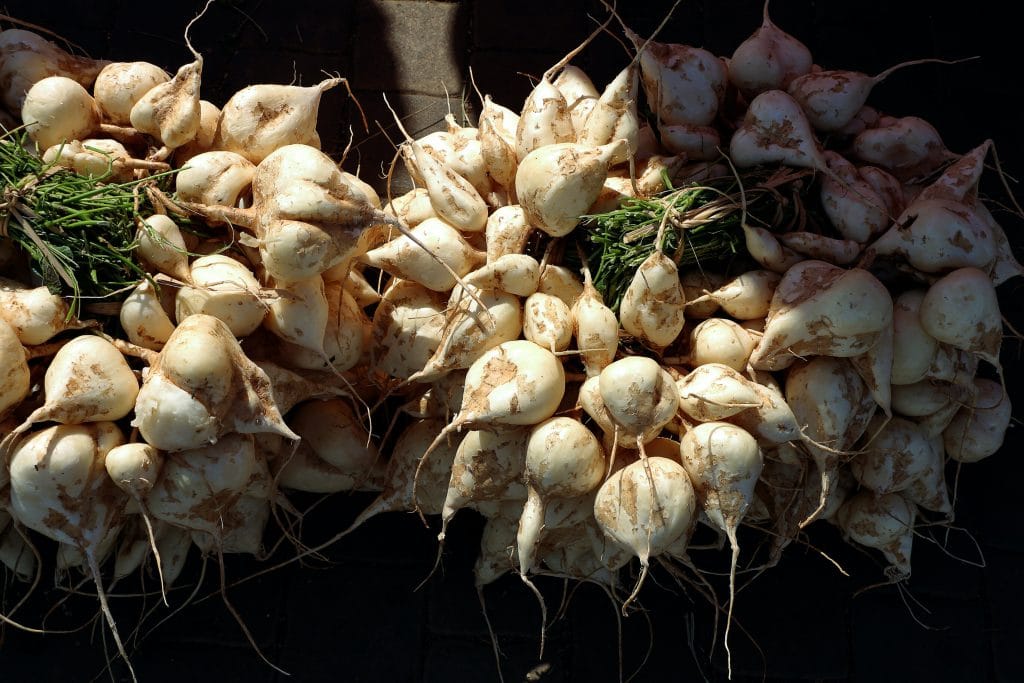
Jicama (HEE-Kuh-muh) plants grow predominantly in Mexico or Central America on elongated vines. It is also commonly known by various names, including Mexican Potatoes (and Turnips) or Chinese Potatoes.
They are root vegetables with thick-set brown skins, like beats. Their flesh resembles potatoes (with fewer carbs), and they taste like apples, albeit less sweet.
While they can weigh as much as 50 pounds, that should not stop you from using Jicama as the smaller varieties with smooth and firm skin are the Daikon substitutes.
A word of caution is advised — only the root should be eaten. All the remaining parts, including the plant’s skin, leaves, and stem, are poisonous.
So, it’s imperative to prepare them thoroughly by rinsing them off and removing the edible roots.
Once that is done, remove all the layers of the poisonous skin (including the papery layer underneath).
Then you are finally ready to chop the cleaned Jicama root into blocks or slices to create a delectable dish.
Korean Radishes
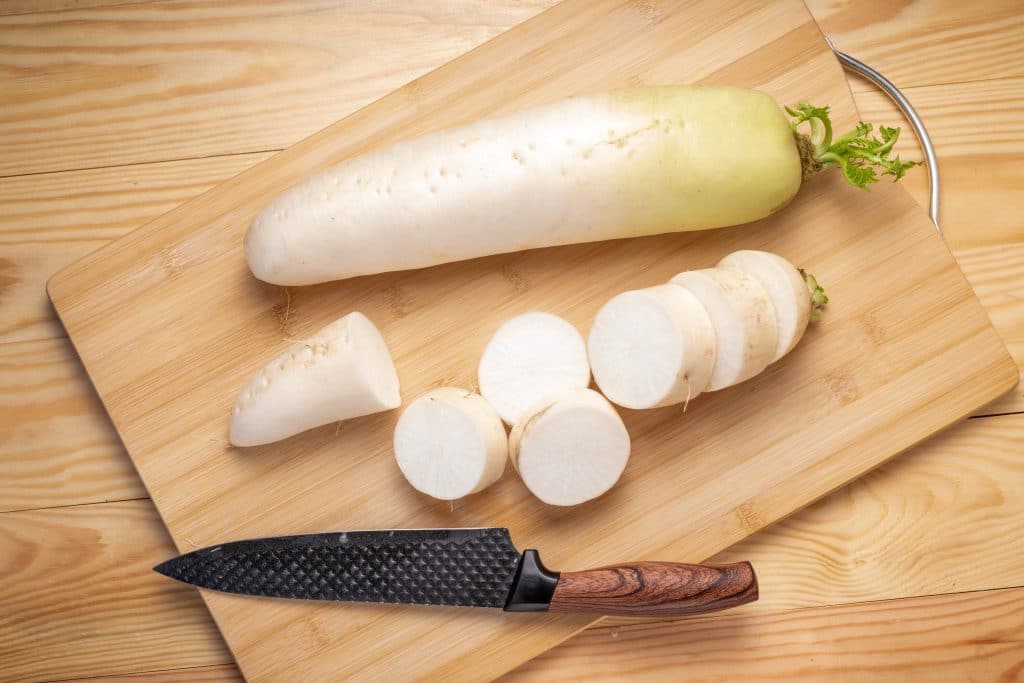
The Korean radish or Mu variety is shorter and more rotund than Daikon. While it is white like Daikon, it has a distinctive greenish tint.
Korean radishes are incredibly popular due to their substantive route-flesh and unique flavor to such an extent that some people prefer it over Daikon.
The best part is that you don’t have to travel all the way to your neighborhood Asian market as you will probably find it in your local supermarket, and Korean radishes are incredibly cost-effective.
It’s a great Daikon substitute as Korean radishes pack a punch in the flavor department, with a mildly sweet taste (add sugar if needs be), and it has a satisfying crunchy texture. However, it does have a bespoke taste that is not a “carbon copy” of Daikon.
If you want to use Korean radishes, they will certainly differ in comparison with milder-tasting White Turnips.
Although Kimchi recipe ingredients differ vastly depending on the region where it is produced, a Daikon substitute is essential to aid the dish’s fermentation.
Ancient Parsnips
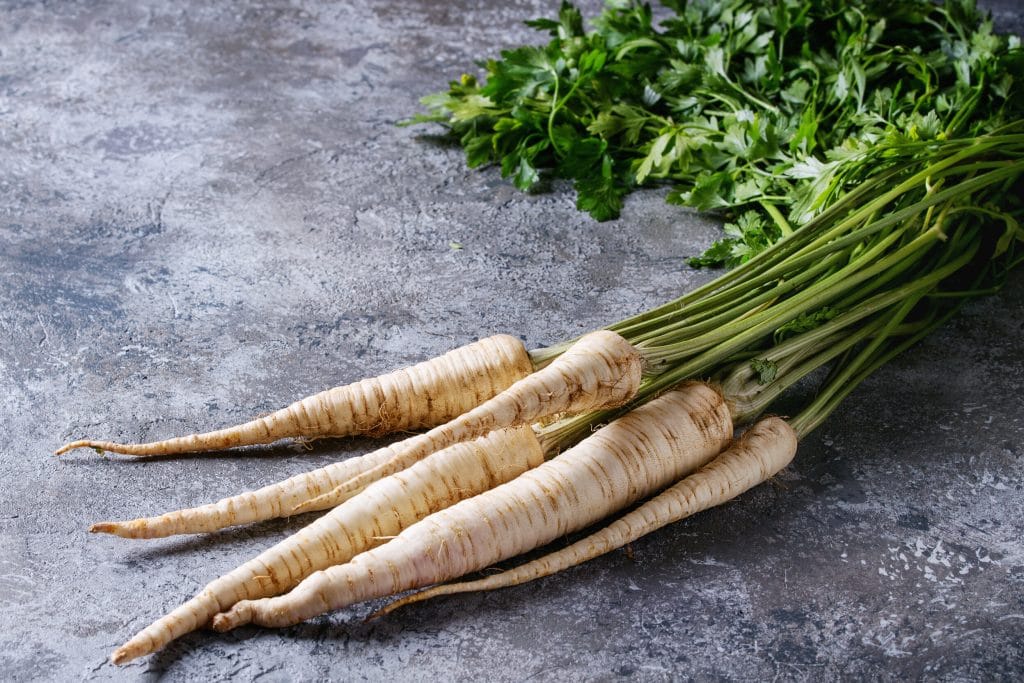
Parsnips date back to antiquity when the Romans started cultivating them in Eurasia (Europe and Asia). Before the advent of cane sugar, it was often used as a sweetener. Parsnips reached North America during the 17th century and have remained popular ever since.
While you can’t blame anyone for confusing parsnips with carrots, they are not too far off the mark as parsnips and carrots are part of the same plant family. However, Cow Parsnips are related to the parsley genus.
Although parsnips are normally cooked, they are high in fiber, may be eaten raw in salads, and are highly nutritious due to their significant vitamins and minerals, especially if you are deficient in potassium.
Parsnips are a great substitute for Daikon due to its unique, carroty flavor that develops during its growing phase when the plant’s starches turn into sugar following an onset of frost.
The other advantage is that it’s easy to find, which means you don’t have to scour around looking for it like you would need to with rare, imported vegetable varieties.
Though parsnips are sweeter than Daikon, it has the same texture and color. However, mild-tasting parsnips would not be a great choice if you want a Daikon substitute that is a little more pungent.
Horseradish
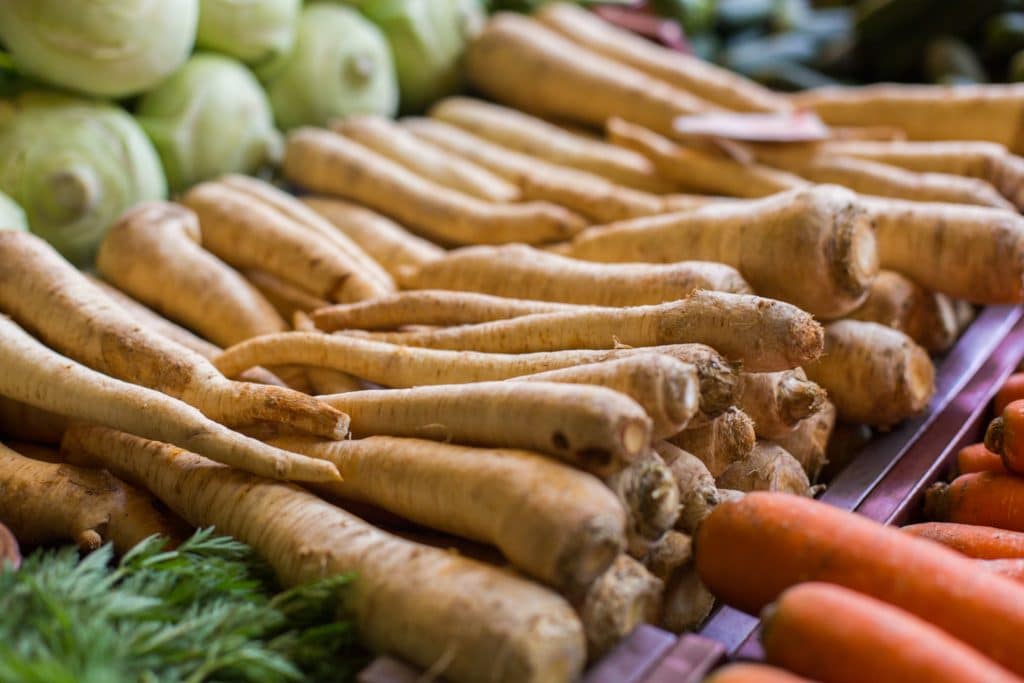
Horseradish root is a spicy, aromatic vegetable that is closely related to the Daikon mustard plant family and has been used for medicinal use since the beginning of time.
It is used as an additive for a wide variety of condiments, especially to season spicy burgers and delicious fish dishes. If you are not familiar with Horseradish, it tastes like fiery wasabi garnishes that are typically served with Sushi.
Horseradish is certainly not for the faint-hearted or the white turnip or parsnips lovers of this world. It definitely packs a punch in the taste department with its fiery dragon-breath qualities.
However, it adds some oomph to any dish, especially if you are looking for a spicy Daikon alternative.
The added advantage is that leftover Horseradish can be used to season numerous other dishes like mayonnaises, sources, or fresh, nutritious veggies.
While there’s no debate about Horseradish’s fiery taste, it can become more bitter when exposed to either heat or air.
If you want to use Horseradish as a Daikon substitute, add a little amount at a time, and taste your dish as you cook (less is more).
Beetroot

Earthy tasting beetroots have been cultivated since antiquity in the Mediterranean region, following which it found its way to George Washington’s elegant dinner plate in Mount Vernon.
Beets have since been transformed from their early heydays as traditional dark-red root veggies to fun candy-cane, red and white striped hybrids that are the same shape as turnips and radishes.
Beets are high in antioxidants and are delicious as either a cooked or raw salad, with the added advantage that their highly nutritious leaves are also edible.
They are great Daikon substitutes due to their sweet, earthy taste if you don’t mind substituting white Daikon with a red-colored veggie.
Common Garden Variety Carrots
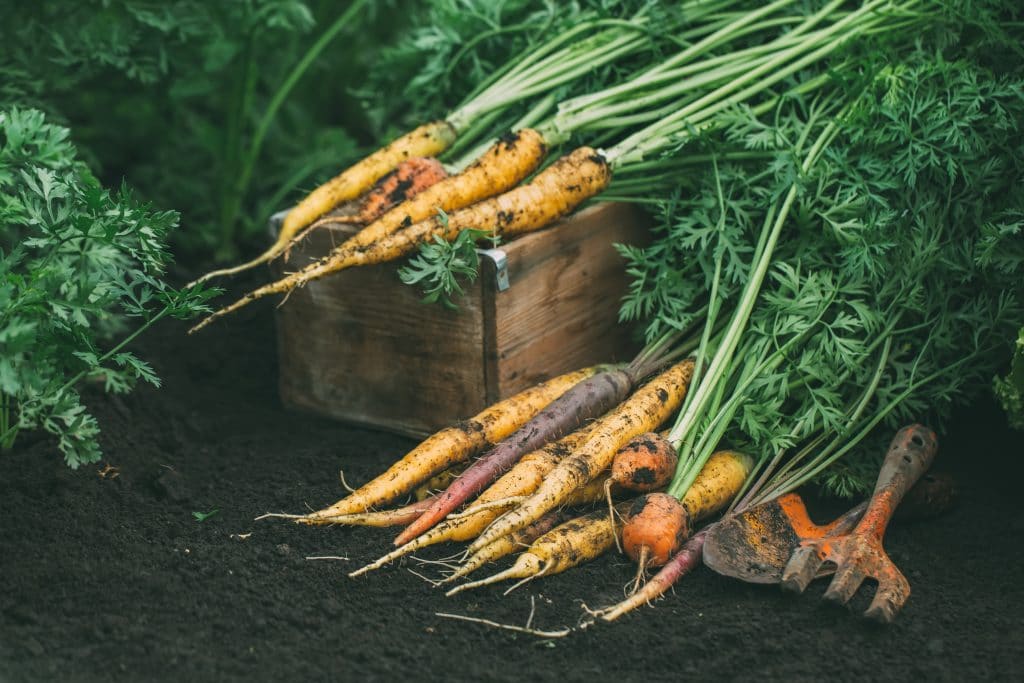
All modern-day carrots are descendants of wild carrots that probably evolved from Persian wild carrots in Iran, Europe, or Southwestern Asia.
As part of the root vegetable family, carrots have since evolved from the traditional orange hue to a rainbow of colors ranging from purple, white, yellow, red, and dramatic black.
However, the best part of using carrots as a Daikon substitute is that they are easily available and will provide a similar sweet touch, and the prerequisite crunchiness, albeit it will lack the depth of flavor.
The best part is that nothing will go to waste as the leftovers will not go to waste as you could re-use them to make nutritious salads, soups, and delicious pickles.
Cabbage Hearts
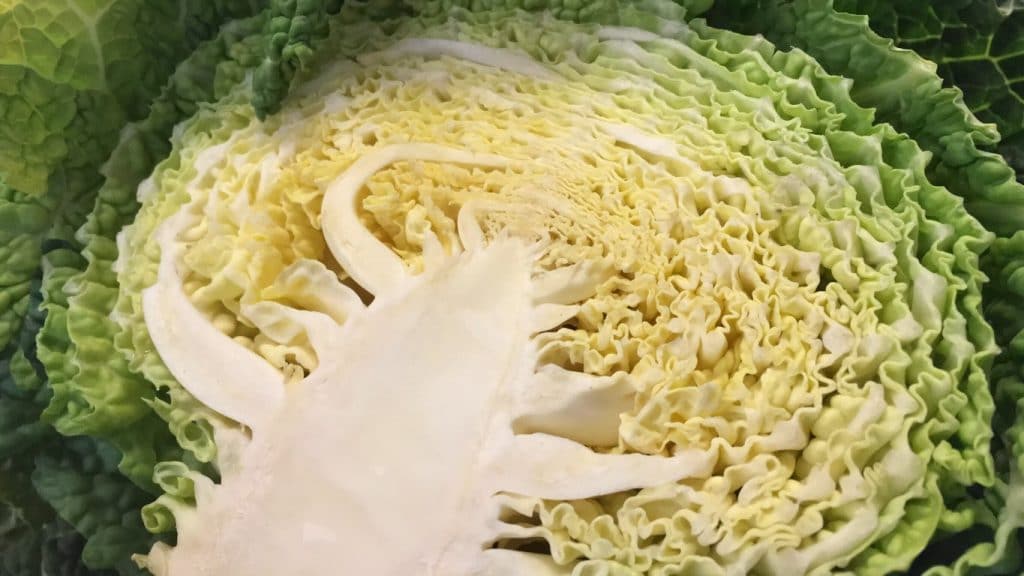
Cabbage hearts are last on my list as a potential Daikon substitute for a good reason, especially if you have nothing else readily available.
While cabbages are not radishes like some of my other sensible substitutes, they are part of the cruciferous veggie family; cabbage hearts have delicious crunchy qualities similar to Daikon.
The only caveat is that cabbage hearts are better suited to recipes that require limited amounts of Daikon like casseroles or soups, and noting will go to waste as you only need the cabbage core or heart. The remaining cabbage leaves can be used for other healthy meals.
So, What Are The Best Substitutes For Daikon?
While Daikon may be substituted with other suitable vegetables, its unique sweet taste and crunchy texture are not easy to replicate. White Turnips are suitable if you prefer a subtle taste; Jicama or Korean radishes are perfect substitutes if you crave a sweeter alternative. Otherwise, try parsnips in a pinch. But whatever you do — enjoy!
